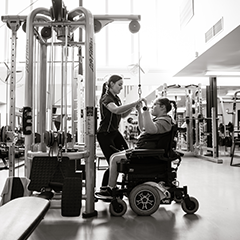 University of Queensland researchers have posed the idea that there may be sub classes of aphantasia, including ‘deep’ and ‘shallow’ aphantasia.
University of Queensland researchers have posed the idea that there may be sub classes of aphantasia, including ‘deep’ and ‘shallow’ aphantasia.
Aphantasia is a relatively common form of neurodiversity, with about four percent of people unable to have imagined visual experiences.
PhD candidate Loren Bouyer from UQ’s School of Psychology shares her unique experience of living with ‘deep’ aphantasia, in a perspective piece recently published in Frontiers of Psychology.
“I’ve never been able to see pictures or hear sounds in my mind, and I don’t have an inner monologue - so I can’t talk silently to myself,” Miss Bouyer said.
“If I’m asked to imagine or think about an object, I understand it conceptually and can imagine how I would interact with it, but I can’t see it or imagine the sound it would make.
“However, what makes my experience unique is this can extend beyond thought and into visual inputs, leading us to believe there are different levels of aphantasia.
“For example, while others can see a line drawing of a cube, I can only see a jumble of 2D shapes and lines, and I cannot experience face pareidolia- the phenomenon of seeing faces in objects.”
Co-author Professor Derek Arnold has ‘shallow’ aphantasia, he cannot see images in his mind but has typical experiences of actual visual inputs.
“We’re interested in finding out about the range of experiences of aphantasia, and if these relate to other types of neurodiversity, such as autism spectrum disorder,” Professor Arnold said.
“In our article we go into depth about Loren’s experiences of ‘deep’ aphantasia, and we believe her experiences result because processes in the front of her brain fail to shape activity in other brain regions responsible for perception.
“Loren seems to see the world more directly, in a way that is less informed by expectations.
“We hope that by sharing our experiences with aphantasia we can create opportunities for more research into the concepts of ‘deep’ versus ‘shallow’ aphantasia and conduct more conclusive testing.”
The researchers are currently recruiting research participants with both aphantasia and hyper-aphantasia, the ability to have unusually intense imagined sensory experiences.
People who are interested are encouraged to apply through the study website.
Media contact
Faculty of Health and Behavioural Sciences Communications
habs.media@uq.edu.au



